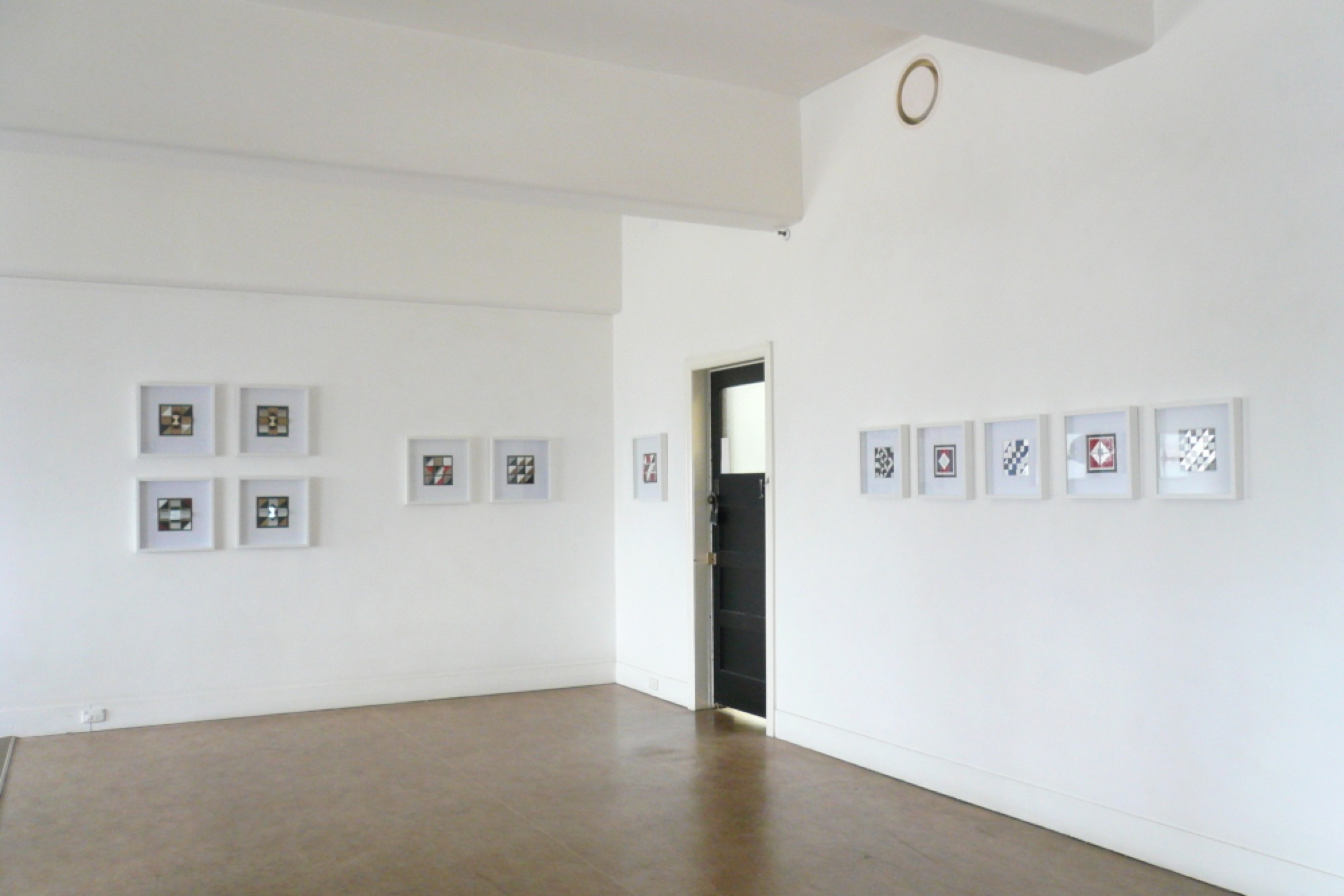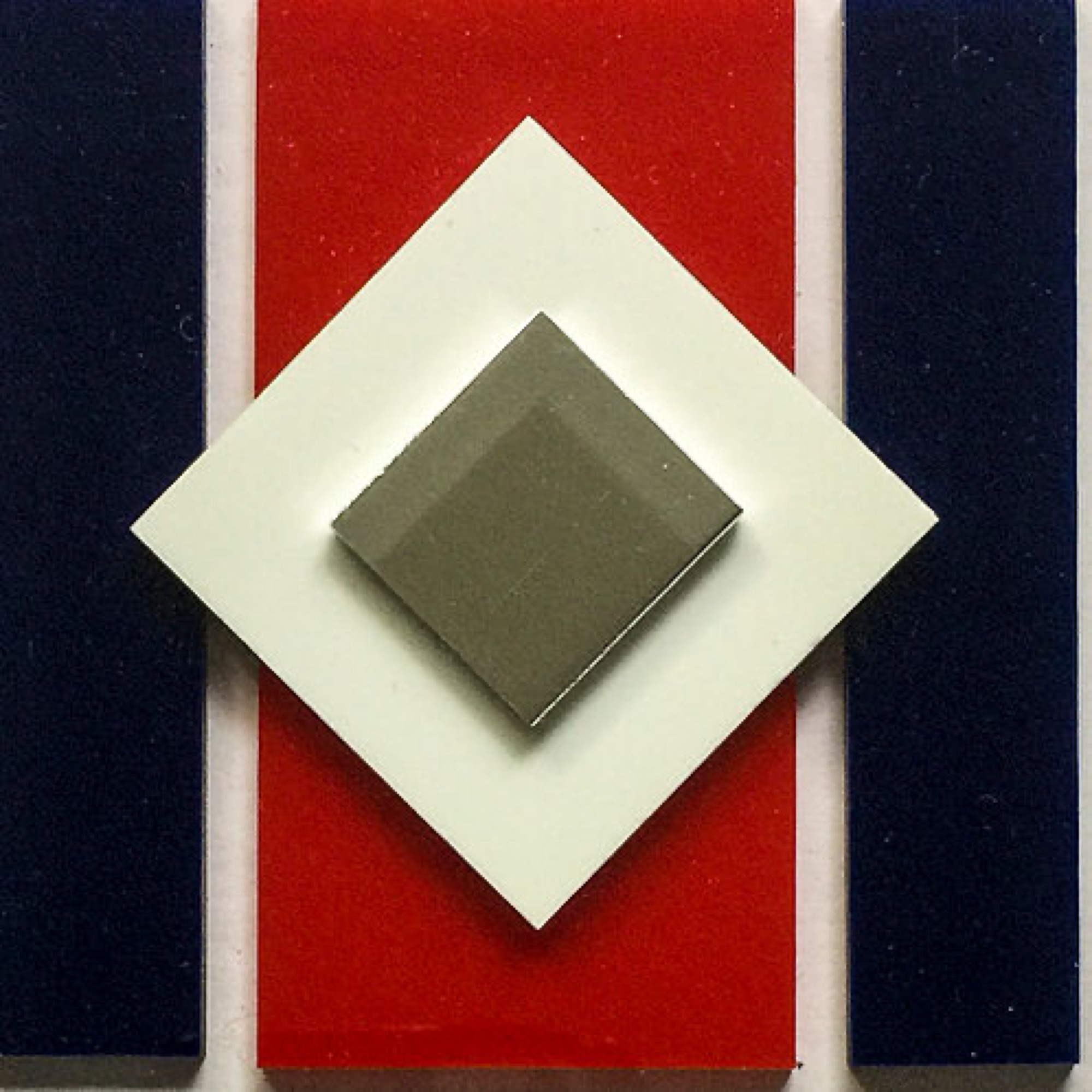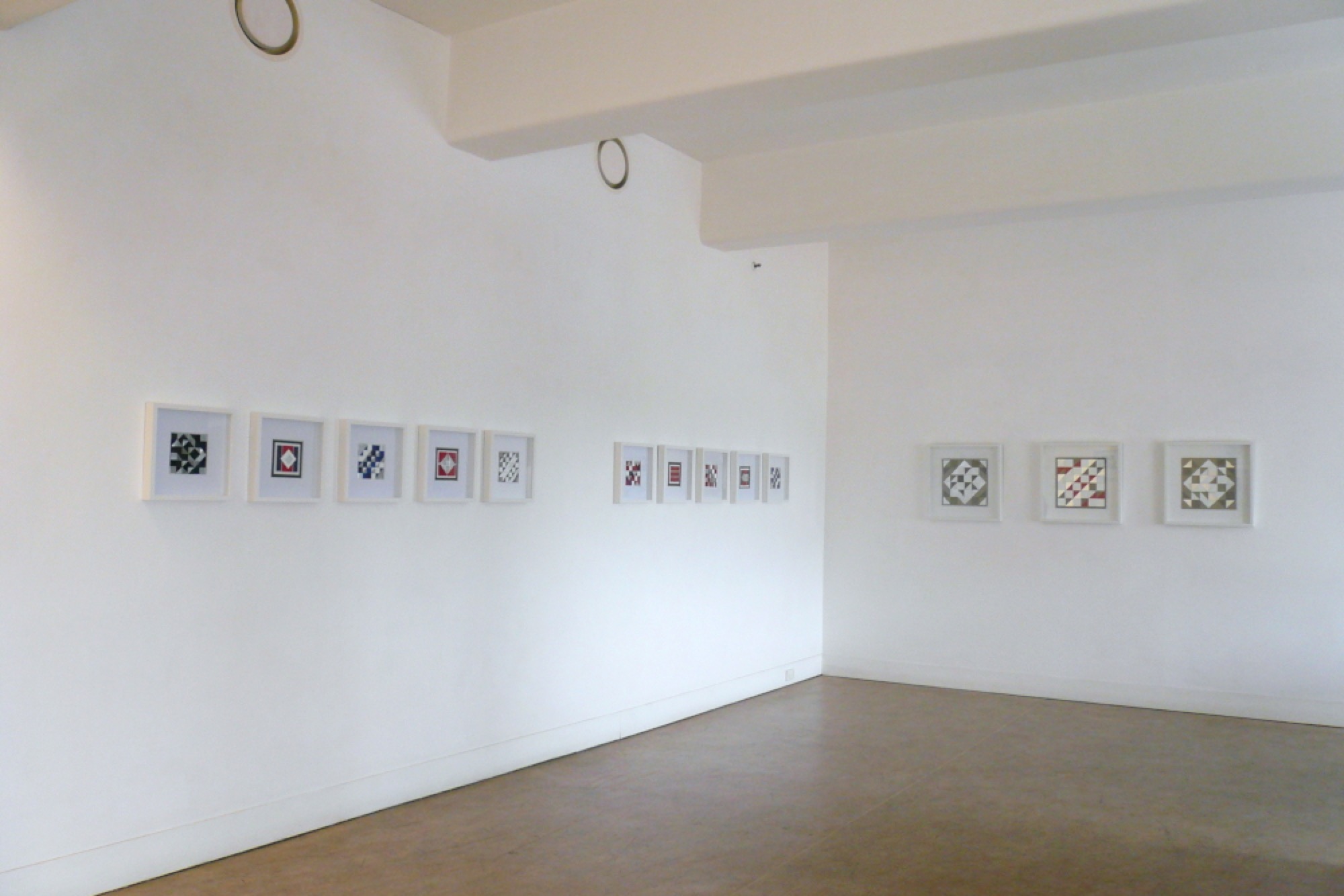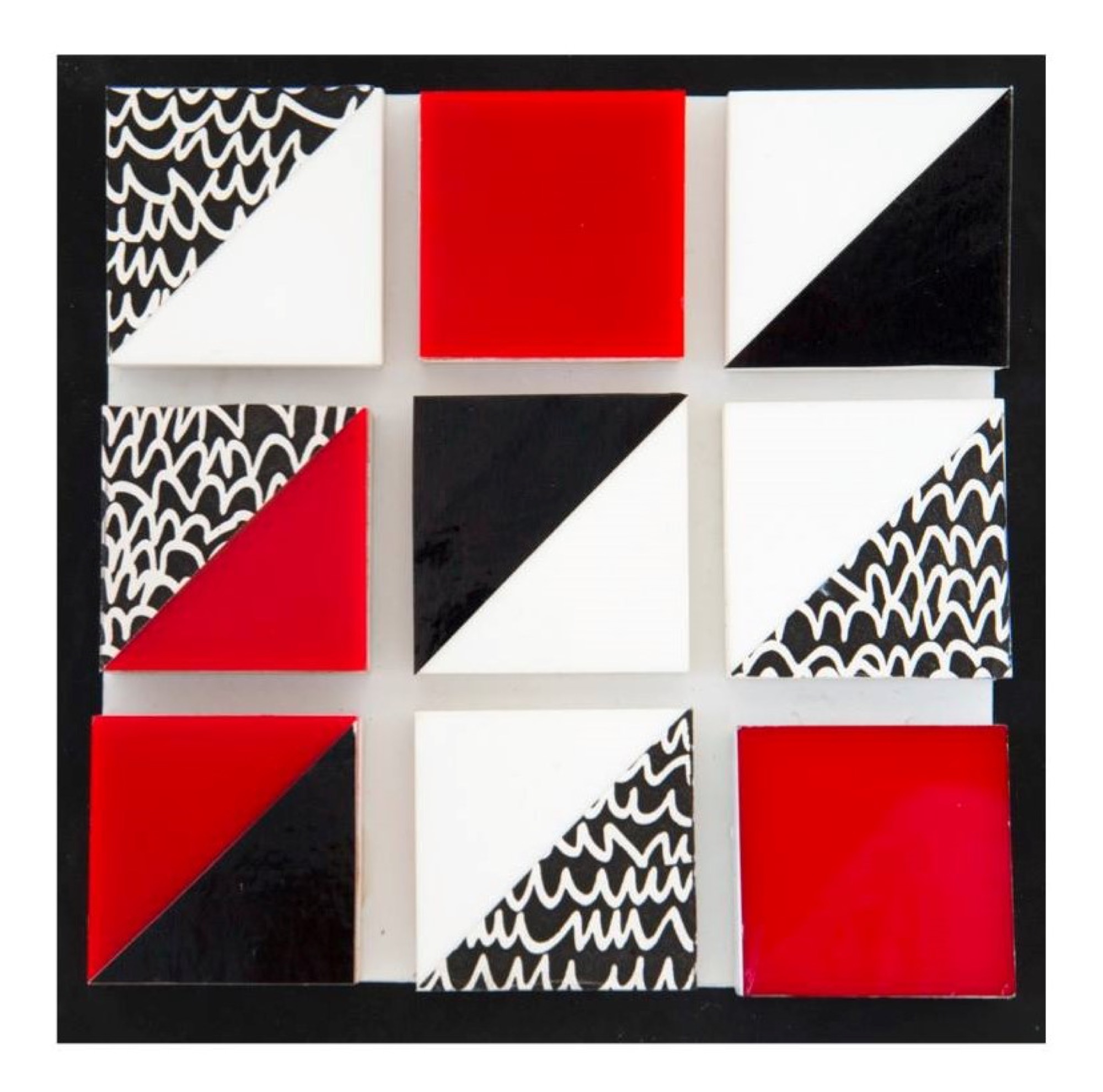Isabel Davies: Recent Geometric Constructions
Victoria Perin
The 90-year-old Melbourne artist Isabel Davies is meticulous; you can tell from her website. On the internet, Davies has self-curated images of her work into a mighty retrospective exhibition. In her ‘about the artist’ section, she features organised binders of archival documents—neat, plastic-sleeved press clippings—as well as candid photographs of her aged hands cutting, tearing and arranging collage elements. Collage and assemblage have been Davies’ mediums since she turned 40. At that point in her life, she had studied painting at the National Gallery School (as what we would now call a mature-aged student), had her first solo exhibition in 1969, before radically ditching her John Brack-inspired painting practice for new seventies-cool Melbourne-style constructions.

Gallerist Stephen McLaughlan does not represent Davies. This show may be a one-off. McLaughlan has only met the artist two or three times (once was the opening of the exhibition). He tells me how, after the death of her husband, Davies was packing things and found unused materials from her work between 1970 and 1973. These materials, which her husband had cut and prepared for her, included coloured Perspex, Masonite, painted wood, corrugated cardboard and (most strikingly) a very period anodised aluminium. Davies placed her materials in rhythmically “mathematical” ways, and at the time they read as chic and clean. While these parts were cut to riff on the square, the cube and “sections thereof”, it was her cascades of aluminium pyramid-shapes that became Davies’ signature. The artist exhibited these geometric, minimal pieces at Marianne Baillieu’s fashionable Realities Gallery.
Two years ago, Davies made new works from the rediscovered leftovers of these early works. New artworks, old bits. These are the pieces at the Stephen McLaughlan Gallery. On close inspection, you can see the age of these 40-year-old materials. Collage is an art form that is forgiving of yellowed paper and visible, crusted glue, but these late-twentieth century scraps have different tells. Perspex gets a slight fog from surface scratching, but most noticeable are the corroded edges of the aluminium triangle shapes, touched with visible wear-and-tear. What in reproduction appears as hard-edged geometric abstraction, suddenly reveals itself as softly-dented. Less hard, less stubborn, more forgiving.

After 1973, Davies changed her art completely from mathematical expressions of geometry. After the Women’s Lib movement rushed through Melbourne’s art community in the mid-1970s, Davies responded with a second, radically different signature style. First, she made a small boxed boardgame called Monthly Cycle (1977) for an exhibition of postal art in the Institute of Contemporary Art, London, “complete with pink satin decorated tampon markers to move around the board.” Davies, like Erica McGilchrist, who is in the middle of an interesting retrospective reassessment, was one of the older female artists who actively organised for feminism in local art spaces. In their personal art practice, both Davies and McGilchrist were buoyed mid-career by second-wave feminism.

Soon Davis began combining collage with tableaus, staged inside intimately scaled boxes. These table-top sculptures made of wood and Perspex weren’t vitrines but were instead open to the audience. They recall a sectioned dolls house, or a medicine cabinet with its mirrored door removed. Davies began decorating the backdrop of these work with paintings or collages of found or treated paper. The objects she placed in the boxes were commonly old glass bottles, shells, feathers, beautiful dead insects and bones; the type of found objects we treasure as children but eventually convince ourselves are junk.

This second, intimate style is better known, and has been anthologised in post-1988 histories of Australian art, such as Nevill Drury’s New Art Two: New Directions in Contemporary Australian Art (1988), Arthur McIntyre’s Contemporary Australian Collage and its Origins (1990) and Sandy Kirby’s Sight Lines: Women’s Art and Feminist Perspectives in Australia (1992). Despite how different these two styles appear, they are based on the same categorical behaviour. The same meticulousness that exists in the 70s geometric abstraction is present in the carefully composed box-works.
Davies saw the change from her cool formalist constructions to her later personal and intimate boxes as a process of revelation. “The Women’s Movement has changed my life”, she wrote in the journal Lip in 1981. “I surveyed my life … Elements of a new vocabulary emerged.” The restraint of her earlier style was revealed as a constraint and a new organised authenticity was unleashed.

So, what then are we to make of these works—assembled from the debris of the artist’s old, inauthentic, once-relinquished early style? Davies writes of a “sudden and unexpected urge” to reuse the materials. Critically, she sees herself as more skilled now. After 40 years of a collage practice, she could use these discarded bits “in ways I hadn’t thought of in the 70s.” I imagine this process of self-revision was deeply satisfying. Arranging and rearranging these lightly disintegrated squares and triangles, both continuing and changing the past.

Despite the generosity of Davies detailed website archive, the surfaces of these works are delicate and subtle, and thus reproduce poorly. If you are interested in complex responses to this significant period of change in Australian art in the 1970s, they are well worth seeing in person. Today is the last day of the exhibition.
Victoria is a PhD student at the University of Melbourne. Her research concerns printmaking in Melbourne during the 1950s, 60s and 70s. In 2013, she was the Gordon Darling Intern in the Australian Prints and Drawings Department at the National Gallery of Australia.
Victoria Perin is a PhD student at the University of Melbourne.


